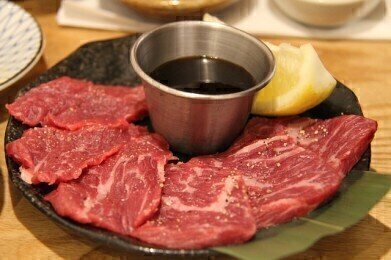Bioanalytical
What's So Special About Wagyu Beef? - Chromatography Investigates
Nov 21 2017
We all need to eat to live, to get the nutrients needed to ensure we have the energy to walk to the shop to buy more food. But for some people, food is more than an essential component of their lives. Food is art, culture and science all rolled into one. If they want syrup for their pancakes it has to be the finest Canada can produce; for a slice of ham, only Parma ham will do. Certain regions have become associated with producing foods that are prized by epicureans and gourmands the world over. And when it comes to meat - Wagyu beef is where all the best taste buds go.
Wagyu beef — best beef?
Wagyu is a Japanese name for cow - (Wag = Japanese and yu = cow) - and refers to one of four breeds of cattle: Japanese Black, Japanese Brown, Japanese Shorthorn and Japanese Poll. To be true Wagyu cattle, and carry one of the prime markers like Kobe Beef, the cattle must be reared and fed in a special way. They are given names and wear coats when the weather turns cold - sound like a farm near you? It is in part the process of rearing the cattle that contributes to its cost - probably the most expensive beef in the world.
Japanese Black make up most cattle that are known as Wagyu - although there are different strains within the breed. It is part genetics and part nurture that gives the meat the attributes that cause it to be so revered in the meat-eaters world. The intense and intricate marbling in the meat help to give the beef its flavour - which is described as rich, soft and buttery. Now a paper published in the Journal of Agricultural and Food Chemistry has examined a key component of the flavour of Wagyu beef - its smell.
Don’t hold your nose
The study - Identification and Characterization of Volatile Components Causing the Characteristic Flavor of Wagyu Beef (Japanese Black Cattle) - carried out by scientists in Japan claims to have identified the key components that give the beef its distinctive aroma. The aroma - which some have compared to coconut or fruit - adds to the meat’s distinctive flavour.
To ensure that they tested the met at optimal conditions, the team heated the beef to 175ËšF to simulate optimal cooking conditions and compared it to other beef samples. They then sampled the meat’s volatile compounds and analysed the samples using gas chromatography. The analysis of volatile compounds is discussed in the article, A New Method for Fast Residual Solvents Analysis and Untargeted Unknown Identification Faster Sample Throughput and Shorter GC Runtimes Using GC-VUV and Static Headspace.
The researchers managed to identify ten new compounds in the Wagyu beef aroma samples, with some of the compounds also found in the control sample. The team found that the most potent aroma compound was derived from fatty acids in the meat. Having identified the odorants — will it bring the price down?
Events
May 11 2025 Vienna, Austria
May 18 2025 Tempe. AZ, USA
May 21 2025 Birmingham, UK
Jun 01 2025 Baltimore, MD, USA
Jun 15 2025 Bruges, Belgium














